This is a guest post from Margy Waller, Senior Partner at the Topos Partnership and fellow Dinnerventionist. Margy has previously guest-posted for New Beans here.
The Invitation
One of the great surprises of my year came in the form of an invitation to dinner received last spring when I awoke to an email titled in part: NOT SPAM PLEASE READ.
The email and invitation to a Dinnervention came from Barry Hessenius of WESTAF (The Western States Art Federation). The dinner is his invention and is designed to bring together an “unheralded group of arts sector leaders…[who] would – as guests at a dinner party – provide for a memorable and meaningfully engaging conversation on critically important arts issues; people with new ideas, who can argue convincingly for those ideas.”
Barry’s democratic approach to developing the invite list allowed for any of the 10,000 or so readers of his blog to nominate guests. He received over 350 names, and then he and his co-producer Shannon Daut, and an advisory group – Ian David Moss, Mitch Menchaca, Richard Evans, Nina Simon, Ron Ragin and Gary Steuer, chose twelve invitees.
The Advance Work
Accepting the invitation meant committing to a fair amount of thinking and writing. But what a sweet requirement, right? We got to nominate topics for the dinner conversation and then write our ‘case’ for addressing the issue in a short briefing paper – arguments which Barry honored us by publishing on his blog, here and here.
The twelve of us had some interaction via conference call and emails in advance of the dinner. Not as much as I’d have liked, especially in retrospect. One of the primary benefits of the Dinnervention experience was spending time with the others – including the WESTAF staff and Shannon who assisted in every way, and Margot Knight who hosted us at the incredibly lovely and sculpture filled – if remotely-located-on-a-scary-one-lane-cliff-adjacent-road – Djerassi, a retreat for resident artists. Some of my dinner partners were already friends, some I’d never met in person – but had talked to or tweeted with, and others I’d never met before and simply Internet-stalked from a distance.
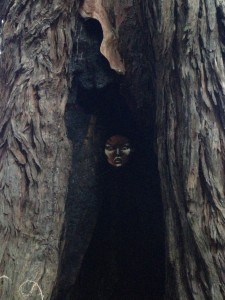 Margot invited those of us who arrived in time before dinner to join her on a hike to see the sculpture and artwork on the land. The works are mostly temporary; artists are aware that the artwork will change and fade into the landscape over time. The tour was a brilliant appetizer of sorts – it made for some interesting conversation about the value of investing limited resources into “art for arts sake.” After all, few people ever get the chance to see the Djerassi artwork, yet it is created by artists on retreat for a month that is, by design, without any demands or artistic requirements. I will say this: it brought some of us together around questions of arts in community – ideas we’d discuss in different ways for three hours over dinner later that evening.
Margot invited those of us who arrived in time before dinner to join her on a hike to see the sculpture and artwork on the land. The works are mostly temporary; artists are aware that the artwork will change and fade into the landscape over time. The tour was a brilliant appetizer of sorts – it made for some interesting conversation about the value of investing limited resources into “art for arts sake.” After all, few people ever get the chance to see the Djerassi artwork, yet it is created by artists on retreat for a month that is, by design, without any demands or artistic requirements. I will say this: it brought some of us together around questions of arts in community – ideas we’d discuss in different ways for three hours over dinner later that evening.
The Topic
We were invited to write and talk about what many people think of as the disruption of the same old ways of presenting art, reaching new audiences, and engaging the public in a conversation about the arts as a public good. The topic, in short, was: “Traditional audiences are declining and participation patterns are shifting seismically, which is having a deleterious impact on arts organization’s traditional revenue streams. How can we address this pattern on a macro scale? What would a new movement around the arts look like?”
As the date for the Dinnervention got closer, I began to imagine a disruption of the dinner. I expected that so many super thoughtful people sitting around a table, discussing how to create a new movement in the arts, would have way more to say than time would allow. It made sense to organize the conversation with some ground rules, and our hosts did so, but I was feeling a desire to organize the participants to disrupt the plan in some way – like, whip out a crazy hat mid-meal and play some music for a serendipitous game of musical chairs. After all, we were invited to talk about art, why not interrupt dinner with a minor random act of art or flash mob action?
But, that didn’t happen. Instead, the disruption came when the people around the table felt so passionately about a topic or statement that they broke the ground rules for discussion and jumped the line for talking. (Otherwise, Barry and Shannon maintained order with a list as we each discretely signaled a desire to comment.)
As I think back on the dinner, those disruptions are among the moments that stand out for me.
The Disruption Sticking With Me
Devon Smith, in her after-dinner-blog, summarized the events in this way:
…the Arts Dinner-vention Party did not reach consensus on how to build a movement for the arts, nor how to save the (institutional) arts (organizations). We did discuss, debate, and disagree on a far range of topics: whether we want to be more like co-ops or soup kitchens, if arts orgs as community centers strays too far from our mission, how to hold arts administrators accountable, who will be our growth hackers, if death panels for the weakest (organizations) among us are really a good idea, and what our minimally viable products will be, among many others. The only thing we agreed on was that the arts are not in trouble, it’s the institutions that are failing.
That’s well put.
One of the disagreements was also a moment of disruption.
Clay and Nina had a bit of back and forth about what Devon describes as the question of whether “arts organizations as community centers stray too far from our mission.”
Nina, of course, leans toward “igniting shared experiences and unexpected connections” in the museum as a thriving, central place in her city.
Clay shared some skepticism about arts organizations serving as community centers.
This was apparently not the first time these two have had this conversation. By the end of dinner, Clay acknowledged that he may be coming around to Nina’s view, as she explained that people are coming to the museum to co-create and otherwise engage in arts events that bring people together. Even if these visitors don’t always come for the art already on the walls, community building occurs through art.
The debate over focus and emphasis at our arts organizations is playing out again as I’m writing this after-dinner-blog of my own. On an artsjournal.com blog post provocatively titled “Trouble in Paradise: Santa Cruz’s Museum Loses Its Way”, Judith H. Dobrzynski extended thoughts she’d written about earlier in the New York Times. As I write this, there are over forty comments on the post.
It’s hard to pull a short quote from Ms. Dobrzynski’s writing to capture the essence of her thinking, but it seems fair to say that she’s unhappy with the trends toward participatory and experiential arts, a focus on visitor engagement – and other things that involve taking the pulse of the “goers” or interfere with simply “standing before the art.”
I added a short note, using the Times platform, when they published Ms. Dobrzynski’s commentary there, reacting to her point that these initiatives will change who goes to museums, and for what. (In short, exactly right and hurrah!)
When she used her own blog to pursue these points via the (apparently under-researched) post of a local blogger who attacked Nina Simon and her leadership of the Santa Cruz Museum of Arts and History, I was compelled to respond more directly. It went something like this:
What Do We Want?
Everything depends on our goals.
Many of us want to live in a place where the arts organizations – museums especially – are of and contribute to community. Buildings that have energy and where people want to be. Places where people come together and get to know each other better, strengthening the bonds of civic infrastructure through art. (Here’s why I say this.)
Everything that I read and see about what’s happening in community engagement at the museum in Santa Cruz is exciting and appealing. It’s no surprise that attendance and membership are up – way up. If we want expanded and bigger audiences for our arts and artists, we should love what’s happening at the Museum of Art and History there, and pay close attention to what they are learning about creating fans and people who want to return – bringing friends and family along.
After watching with enthusiasm from a distance, I had the great fun of visiting the museum with Nina Simon as my guide a few weekends ago. * It was a quiet Saturday afternoon and there was plenty of opportunity for contemplation in the museum – for those what like it like that.
But also, there was a great feeling of energy, and opportunities for me to share my reactions to the art – to feel that I was part of what happened and could contribute to the sense of community there. And these feelings are not unique to me. Every visitor is invited to offer a comment on the museum – right out in the open. Here are two responses I loved enough to photograph:
- “Thanks for trusting us.”
- “I feel happy when I come here.”
What could be better? People who feel this way about a place will tell others, will return, will bring friends. This sort of social capital = success.
When we measure our success by happiness, the Santa Cruz Museum of Art and History is winning.
Thanks
*One of the terrific serendipitous pleasures of the Dinnervention invitation was the time I got to spend afterward at Nina’s nearby museum. But for the dinner, it might have been years before I made my way there IRL. (Not to mention all the time getting lost on the way there with Laura Zabel, who is doing amazing work creating community through and for the arts at Springboard. Driving on the confusing roads in the hills near Djerassi allowed me more time to hear about art on the streets in Minnesota and Springboard’s health care initiative for artists that is super-smart.) Thanks Dinnervention! And special thanks to whichever great friends of mine nominated me to be a guest – I don’t know who you are, but I’m most appreciative. And thanks also to Barry, Anthony, WESTAF, Shannon, Margot and all the staff at Djerassi – the food was spectacular.
Let’s Measure our Success by Happiness.
 What the Other Dinner Guests Wrote about This Topic
What the Other Dinner Guests Wrote about This Topic
As I set about writing this after-dinner blog, I decided to reread the pre-dinner essays by the guests and pull a related thought from each one. It turned out to be quite rewarding to review their commentary again, reinforcing my interest in staying in touch with all of them. In the end, these connections may the most important outcome of the dinner for me.
Laura Zabel: I see no possibility for success in this effort without a bigger definition of who is in our movement.
Kimberly Howard: This new movement around art requires that we create a transition period, where we provide these ‘learning’ experiences that feel more like participation and engagement than ‘teachable moments’ for audiences between 18 and 99, by point blank asking them – what are you interested in seeing on the stage, on the wall, on the pedestal, on the Marley floor? It might mean, for a time, that we shift the paradigm, making work that we are asked to make rather than work that we are inspired to make. It might mean that while making work that is in dialogue with the audiences we think we need, we open ourselves to the possibility of being inspired in new ways.
Clayton Lord: the decline of the traditional institutional arts audience base is a direct result of the rise of the idea (self-perpetuated) of the arts as (1) not for everyone and (2) not necessary, simply nice…[exacerbated] by a historically reflexive reaction from the art community to its ongoing marginalization—namely a pulling away from art as a driver of community engagement, change, and dialogue and towards art as a means and end in itself.
Tamara Alvarado: We are not beyond race and we still need to work on finding commonalities versus differences and I know the arts play a significant role in establishing neutral ground where that conversation can be had.
Nina Simon: People like to recreate socially, and many industries (restaurants, bars, theme parks) clearly represent themselves as social venues. One of the easiest ways to hook people on a new experience is to invite them to participate with you. While the social nature of an arts experience may be implied, it is rarely explicit. This is most glaring in the case of museums; the majority of visitors attend in social groups, but many perceive museum-going as a “contemplative solo activity.” We need to promote arts institutions for date night, family night, girl time—and help people see our offerings as part of their social lives.
Kristin Thomson: [Quoting from a survey to make her point.] “The audience has already moved from “arts attendance as an event” to “arts attendance as an experience.” This desire for a full-range of positive experience from ticket purchase, to travel, to parking, to treatment at the space, to quality of performance, to exit – this will only increase over the next 10 years.”
Salvador Acevado: The days of attracting people to an experience based on our needs are over, and nowadays people want organizations, products, or brands to adapt to their needs, or they will go elsewhere. It is not like there’s a lack of activities or experiences, and the ones that will survive are the ones who cater to the needs and wants of new audiences. It’s called audience-centered missions…audiences are looking for experiences in which they are not passive observers or contemplators of the art form. With the advent of the social web era, in contrast to the TV era, people expect now to be part of and mold the experience.
Devon Smith: …the product itself is doing just fine. It’s the distribution channel that has been forced to change; the amateurs that have subverted power from the professionals.
Lex Leifheit: …how can one respond to a question of traditional audiences and revenue streams without questioning whose traditions these are?
Marc Bamuthi Joseph: …art is not just the object or the outcome, but art is a process and opportunity for community….exponentially broadening its constituent circle…and transforming the audience-arts center paradigm from the transactional into one centered on collaboration.
Meiyin Wang: We should shift from the thinking that art is a commodity we produce to be consumed by the audience – to the practice that art is a relationship between the artist, theater and the audience. We should stop only “telling the story” and really look hard at what the art form has to offer. We should stop being afraid of the audience…. We have to stop pretending that the audience is not there. The focus will turn to the relationship to the viewer, to the relationship of viewership, the experiential, and the changing notion of authorship.

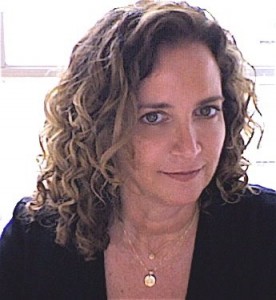
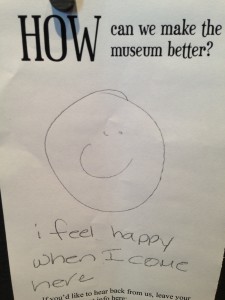
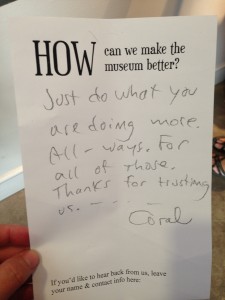
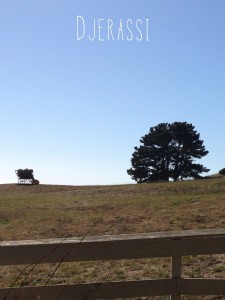
[…] Dinnervention 3: Happiness: Dinnervention and Disruption by Margy Waller […]